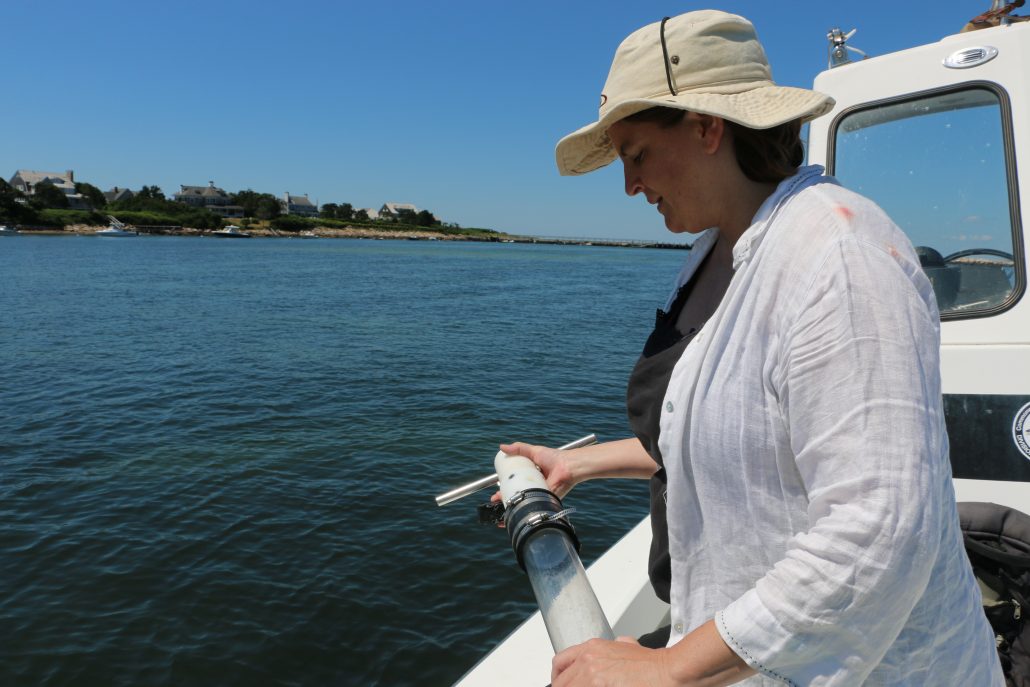New Paper Explores Eelgrass Carbon Storage and Wave Intensity in Nahant

A paper published in Science of the Total Environment shows how carbon rates in a Nahant seagrass meadow correlate with wave intensity
A team of researchers from the Environmental Protection Agency, Boston University, MIT, and others including MIT Sea Grant Coastal Ecologist Dr. Juliet Simpson published a new blue carbon paper in the journal, Science of the Total Environment. The study focuses on field observations at a wave-dominated site in Nahant, Massachusetts, and examines the connection between sediment and carbon accretion rates, wave velocity, and turbulent kinetic energy within a single eelgrass meadow.
VIEW THE PUBLICATION | Spatial heterogeneity in sediment and carbon accretion rates within a seagrass meadow correlated with the hydrodynamic intensity (Lei, et. al., 2022)
____________________________________________________________________________
Lei, J., Schaefer, R., Colarusso, P., Novak, A., Simpson, J.C., Masque, P., Nepf, H., 2022. Spatial heterogeneity in sediment and carbon accretion rates within a seagrass meadow correlated with the hydrodynamic intensity. Science of the Total Environment doi.org/10.1016/j.scitotenv.2022.158685.
FROM THE ABSTRACT | The majority of the carbon stored in seagrass sediments originates outside the meadow, such that the carbon storage capacity within a meadow is strongly dependent on hydrodynamic conditions that favor deposition and retention of fine organic matter within the meadow. By extension, if hydrodynamic conditions vary across a meadow, they may give rise to spatial gradients in carbon. This study considered whether the spatial gradients in sediment and carbon accretion rates correlated with the spatial variation in hydrodynamic intensity within a single meadow. Field measurements were conducted in three depth zones across a Zostera marina L. (eelgrass) meadow in Nahant Harbor, Massachusetts. Four sediment cores were collected in each zone, including one outside the meadow (control) and three within the meadow at increasing distances from the nearest meadow edge. >>Read more.

Dr. Juliet Simpson of MIT Sea Grant holds equipment used for sediment coring.



